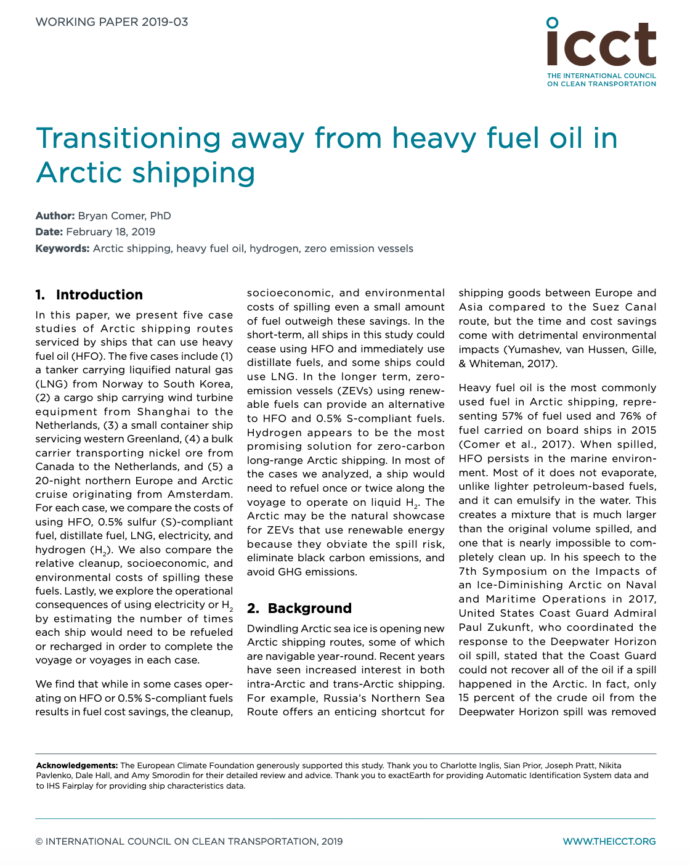Working Paper: Transitioning away from heavy fuel oil in Arctic shipping
As Arctic shipping increases, pressure is mounting to protect the environment from fuels that are harmful when burned and spilled, including heavy fuel oil (HFO). Presently, the IMO is working to develop a ban on HFO in Arctic waters.
This paper presents five Arctic shipping case studies, focusing on ships that can use HFO or fuels that comply with the 2020 0.5% fuel sulfur (S) limit. For each case, we compare the costs of using HFO, 0.5% S-compliant fuel, distillate fuel, liquefied natural gas (LNG), electricity, and hydrogen (H2). We find that, while in some cases operating on HFO or 0.5% S-compliant fuels results in fuel cost savings, the cleanup, socioeconomic, and environmental costs of spilling even a small amount of fuel outweigh these savings.
Using distillate fuels is the simplest way for all ships to immediately stop using HFO in the Arctic. Distillate fuels are expected to be slightly more expensive than 0.5% S-compliant fuels and 26% more expensive than HFO in 2023. However, distillate spills are estimated to be 30% less costly than 0.5% S-compliant fuel spills and 70% less costly than HFO spills. Additionally, distillate fuels result in fewer air pollutants (e.g., sulfur oxides) and climate pollutants, including black carbon.
Liquefied natural gas is predicted to be less expensive to use than any other fossil fuel in the Arctic in 2023. While there are socioeconomic costs associated with LNG spills, there are zero spill-related cleanup costs because it evaporates. It also releases few harmful air pollutants and nearly zero black carbon. However, LNG is a fossil fuel so combusting it releases carbon dioxide. More importantly, LNG is mainly methane, a potent climate warming pollutant that can potentially be more damaging to the climate than petroleum-based fuels. Therefore, we do not consider LNG a long-term solution to decarbonize the shipping sector.
The use of batteries avoids the costs of fuel spills, but the source of electricity will determine the overall health and climate impacts compared to other fuels. Electricity is often less expensive on a per-unit-energy basis than fossil fuels and hydrogen. However, because of the low energy density of batteries relative to other fuels, batteries could only be used on short routes in the Arctic or as part of a hybrid system.
Hydrogen appears to be the most promising solution for zero-carbon, long-range Arctic shipping. While there is growing interest in using H2 for maritime shipping applications, current barriers include a limited supply, especially from sustainable sources, limited fueling infrastructure, and higher costs relative to other fuels, barriers that should lower over time.
Download: Transitioning away from heavy fuel oil in Arctic shipping (pdf)

